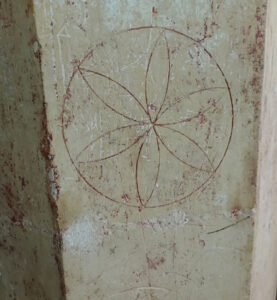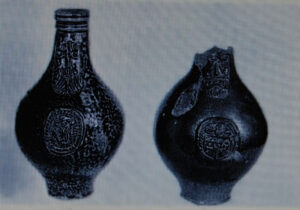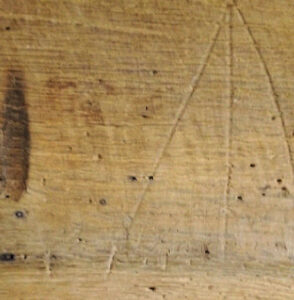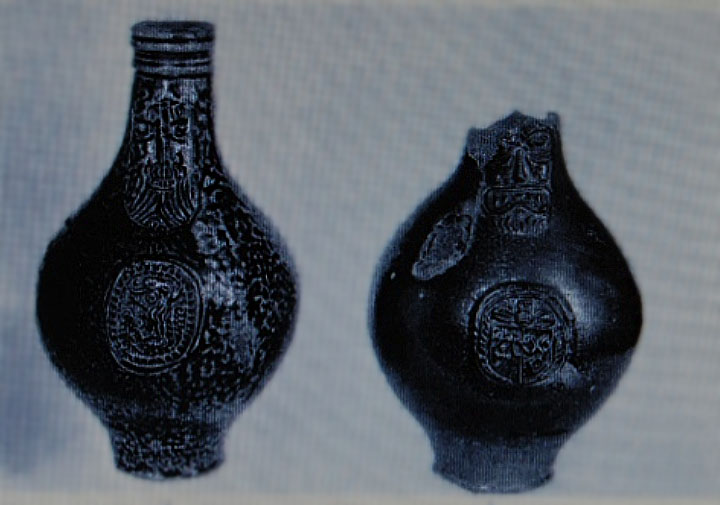Despite the greater notoriety of Matthew Hopkins (recent History Club talk), it is worth noting that John Stearne (1610-1670) was in fact his senior by birth and in authority in the infamous East Anglian witch hunts of the 1640s.
Stearne engaged Hopkins (1620-1647) in the first examination of a witch at Manningtree in March 1645.
Both were born in Suffolk, Stearne being brought up in Long Melford and Hopkins in Wenham Magna, where his father was vicar. Appropriately, Hopkins’s early death was in Manningtree, Essex, where their first case was prosecuted. Stearne later wrote The Confirmation and Discoverie of Witchcraft published in 1648. He spent the rest of his life in Lawshall, where he owned land.
It was Stearne who came to Coddenham to investigate allegations against an unnamed woman. She was said to have “witch marks” identifying where she had suckled Satan in one of his many animal guises. Two searches confirmed the signs and she made what Stearne called “a large confession.” There is no record of what followed.
Stearne’s visit was made in 1645, a year after William Dowsing’s men had taken down crosses from St Mary’s church, in a bid to cleanse it of “superstition”. It is no coincidence that Archbishop Laud’s high church Anglicanism, Roman Catholicism and witchcraft were associated as threats to “godliness”. Documents found after the battle of Naseby seemed to confirm that Charles I would make concessions to Catholics. In a contemporary cartoon his queen is accused of pawning the crown jewels to finance a Catholic army. This is taken to justify Parliamentary soldiers in burning icons. There was also strong belief among the godly that royalists employed the aid of witchcraft.
Superstition was not confined to one party, however. Whatever was thought by men in authority, the common people, royalist or puritan, were as superstitious as in Shakespeare’s time, half a century earlier. Signs are apparent in old buildings. One, despite Dowsing, is in the church.
The daisy wheel could have been made by a mason just to demonstrate his skill. Equally, it is thought by many to be a sign of piety incorporating the hope for blessing. Other marks of less significance are nearby. All were presumably covered by whitewash or plaster in the seventeenth century. It may be significant that they are between the nave and north aisle, the area that once was thought in need of protection from evil.

In the former Duke’s Head, built around 1600, witch bottles were found in 1955. A broken one was in the garden, the other beneath the hearth. They are believed to have been apotropaic, to protect the building from evil. The suggested protection is from fire, as later signs were placed on exterior walls to show the occupants had paid for fire insurance. The fire appliances would only go to their paid-up clients.

Other signs can be seen in old domestic and farm buildings. This burn mark is on a bressummer beam over a fireplace. It is not alone; with many others in the same building, it is thought to have been for protection against fire. The inscribed marks are mysterious. They could represent an inverted “V” for Virgin (i.e. Mary) or some other idea. “Mary” would be appropriate but not acceptable in late-Elizabethan England.

Stranger, even bizarre, is the record of a mummified cat being found when the base of the front wall of the same house was being renovated some years ago. The mummy was restored to a similar position before work was completed, so whether the cat had been a witch’s familiar or was a sacrifice against a possible incursion by such a creature we will never know.
John Pelling – Coddenham History Recorder
With thanks to Nick Mills for an email about the Witchfinders and acknowledgements to Witchfinders by Malcolm Gaskill, London, 2006.

0 Comments